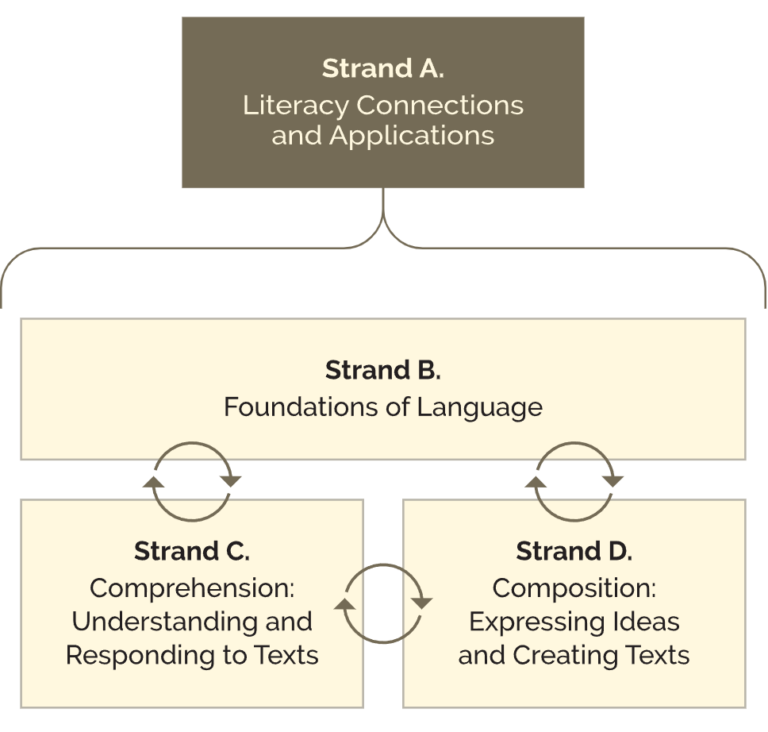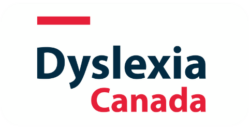Curriculum Overview
The Language Curriculum has four distinct but interrelated strands. It is important to note that the learning related to strand A takes place in the context of strands B, C, and D, and it should be assessed and evaluated within these contexts.

IMPORTANT: Suggestions on how to weave in strand A expectations are included throughout this guide. Strands C and D are where connections to strand A are most critical.
Strand A. Literacy Connections and Applications
Strand A focuses on transferable skills, digital media literacy, and cross-curricular learning. It also outlines the expectation that throughout the language program, students will develop an understanding of diverse identities, experiences, perspectives, histories, and contributions, including those of First Nations, Métis, and Inuit individuals, communities, groups, and nations.
Strand B. Foundations of Language
Strand B focuses on foundational reading and writing skills, such as oral language, phonemic awareness, phonics, vocabulary, fluency, and grammar, that are crucial building blocks for literacy development. These skills form the bedrock upon which more advanced reading comprehension and writing abilities are built.
In Grade 3, there is a provincial requirement to provide at least 30 minutes of daily uninterrupted systematic and explicit instruction in Strand B2 skills. (PPM 168)
Strand B is divided into three overall expectations:
B1. Oral and Nonverbal Communication
B2. Language Foundations for Reading and Writing
B3. Language Conventions
Strand C. Comprehension
Strand C focuses on understanding and responding to text. It involves decoding, vocabulary, grammar, and connecting ideas. Comprehension varies by text and reader, shaped by cognitive skills, knowledge, and motivation. It cannot be reduced to a single score, as it involves multiple processes.
Strand C is divided into three overall expectations:
C1. Knowledge about Texts
C2. Comprehension Strategies
C3. Critical Thinking in Literacy
Strand D. Composition
Strand D focuses on expressing ideas and creating text. By Grade 2, students with a strong foundation in alphabetic knowledge, phonics, and spelling are often eager to write and share their ideas. Writing involves expressing ideas clearly across various forms and genres. Students use the writing process to plan, draft, revise, edit, and share texts, considering purpose and audience. They develop critical thinking and create original work that reflects their experiences.
Strand D is divided into three overall expectations:
D1. Developing Ideas and Organizing Content
D2. Creating Texts
D3. Publishing, Presenting, and Reflecting




